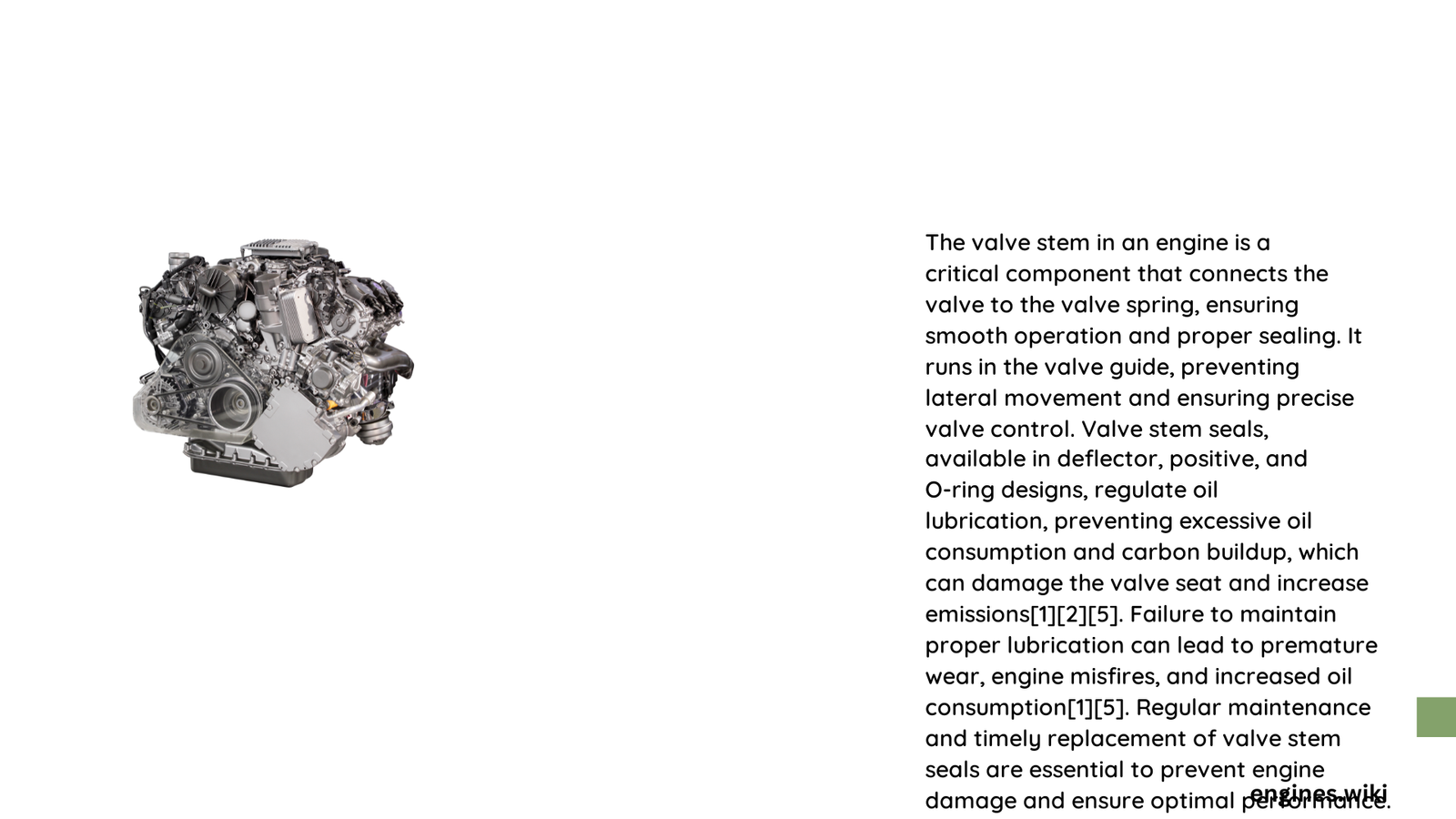Valve stems are critical mechanical components in internal combustion engines that connect valve heads to valve springs, enabling precise control of intake and exhaust gas flow. These precision-engineered components play a crucial role in engine performance, determining fuel efficiency, power output, and overall engine reliability through their dimensional accuracy, material composition, and interaction with valve guides and seals.
What Makes Valve Stem Critical for Engine Performance?
Valve stems serve as the primary mechanical linkage between valve heads and valve train components. Their design and condition directly impact engine efficiency, combustion quality, and long-term durability. Understanding their specifications and maintenance requirements is essential for automotive professionals and enthusiasts.
What Are the Primary Specifications of Valve Stems?
Diameter and Length Specifications
- Typical Diameter Range: 4 to 16 mm
- Total Length Range: 50 to 300 mm
- Common Diameter Examples:
- 5 mm for smaller engines
- 6-7 mm for mid-range engines
- Up to 16 mm for heavy-duty applications
| Engine Type | Valve Stem Diameter | Typical Length |
|---|---|---|
| Small Engines | 4-6 mm | 50-100 mm |
| Medium Engines | 6-9 mm | 100-200 mm |
| Large Engines | 9-16 mm | 200-300 mm |
How Do Material Choices Impact Valve Stem Performance?
Valve stems are typically manufactured from:
– Chromium-Molybdenum Steel: High strength and heat resistance
– Stainless Steel Alloys: Corrosion-resistant
– Titanium: Lightweight, used in high-performance racing engines
What Causes Valve Stem Wear?
Several factors contribute to valve stem deterioration:
1. Inadequate Lubrication
2. Extreme Temperature Variations
3. Mechanical Stress
4. Combustion Chamber Deposits
5. Improper Valve Clearance
How to Diagnose Valve Stem Issues?
Diagnostic Indicators
- Excessive oil consumption
- Blue smoke from exhaust
- Reduced engine performance
- Unusual valve train noise
- Irregular compression readings
What Are Maintenance Best Practices?
- Regular Inspection
- Check valve stem diameter
- Measure stem straightness
-
Evaluate surface condition
-
Lubrication
- Use high-quality engine oil
- Maintain proper oil viscosity
-
Replace valve stem seals periodically
-
Replacement Considerations
- Monitor stem diameter wear
- Replace if diameter variation exceeds 0.1-0.2 mm
- Use manufacturer-recommended replacement parts
Cost and Labor Implications
- Valve Stem Seal Replacement: $5-$20 per set
- Complete Valve Stem Replacement: $50-$200 per valve
- Labor Time:
- Single Cylinder: 3-5 hours
- Multi-Cylinder: 10-20 hours
Conclusion

Valve stems represent a critical yet often overlooked engine component. Proper understanding, maintenance, and timely replacement ensure optimal engine performance, fuel efficiency, and longevity.
